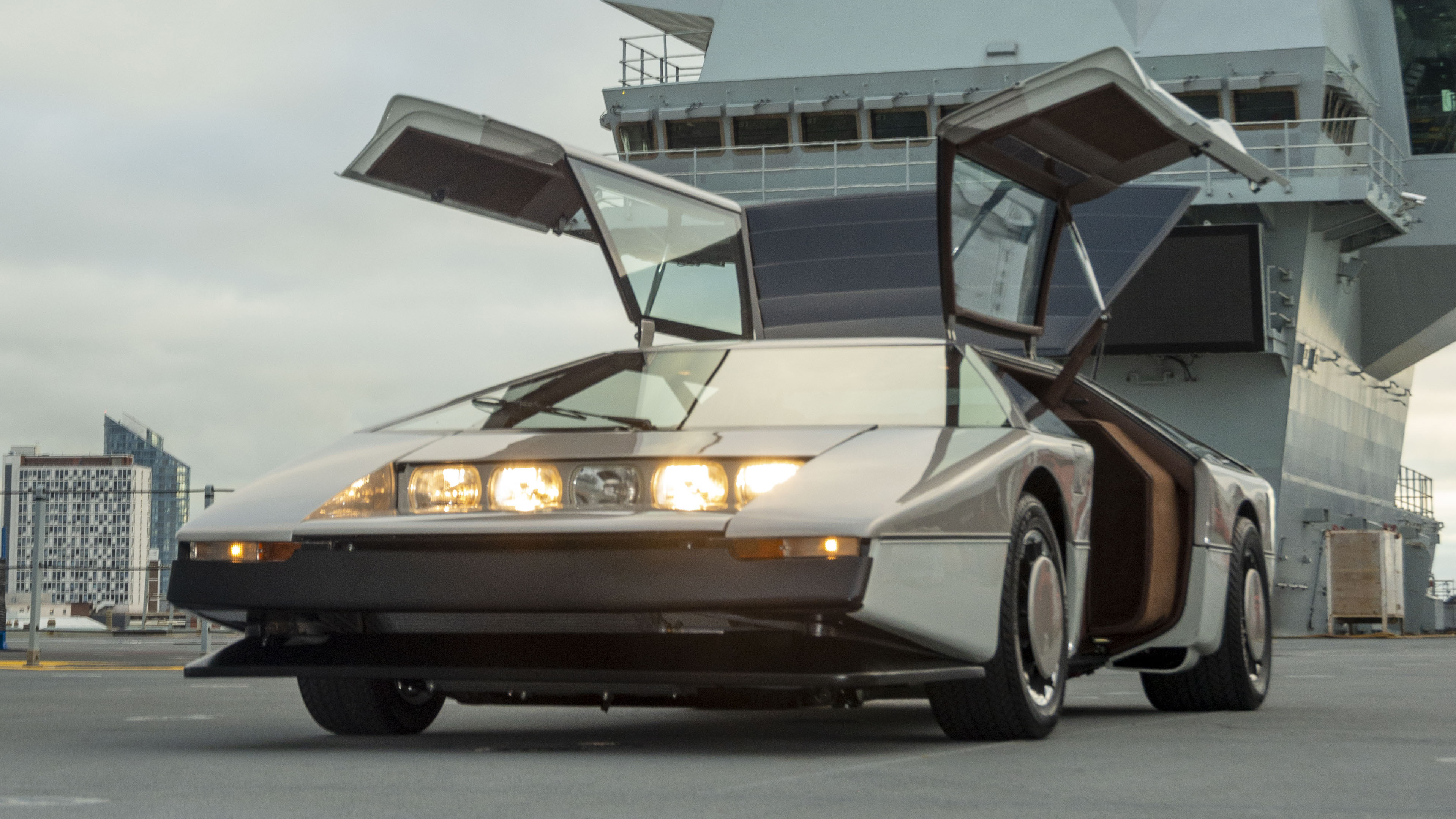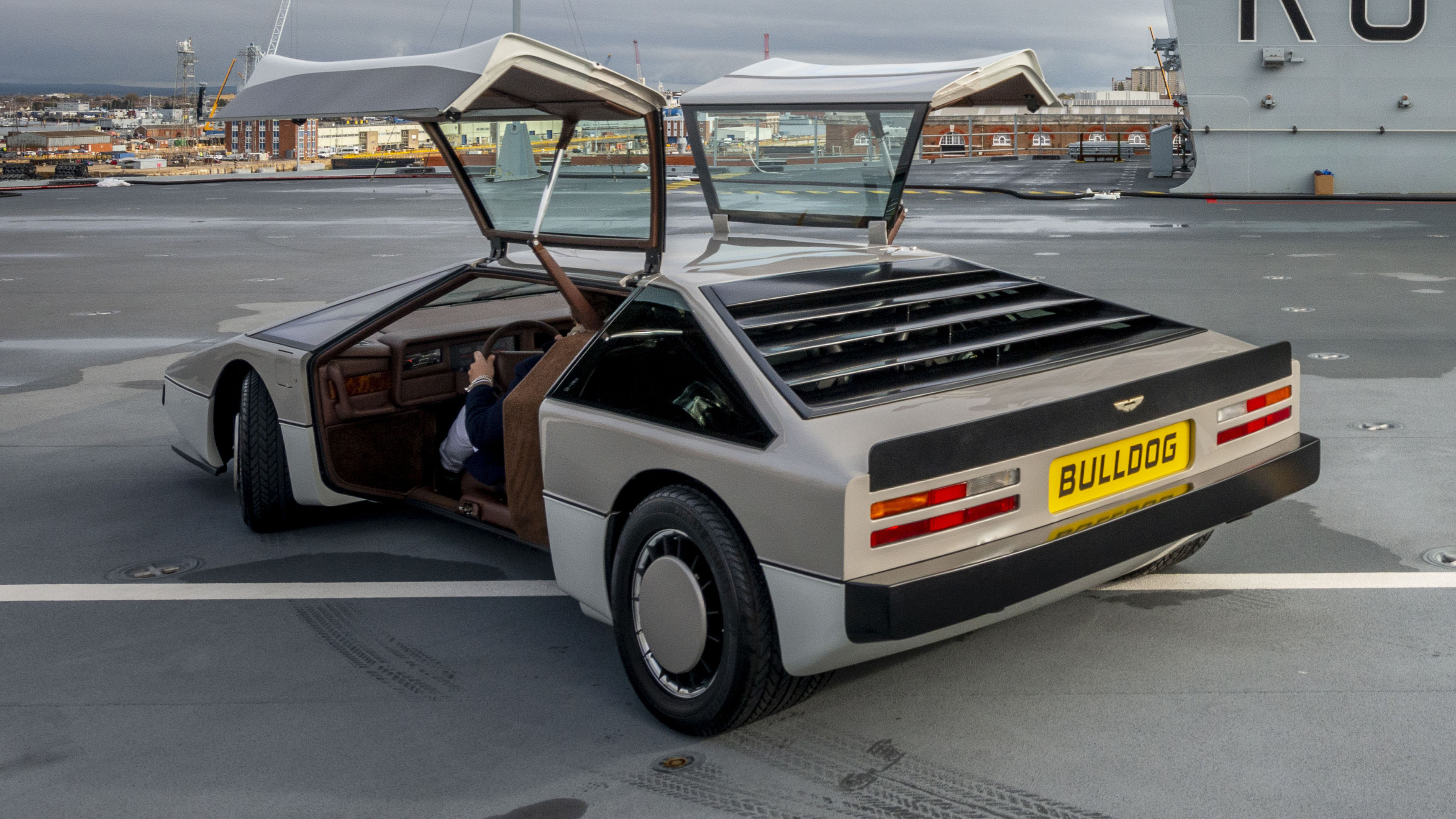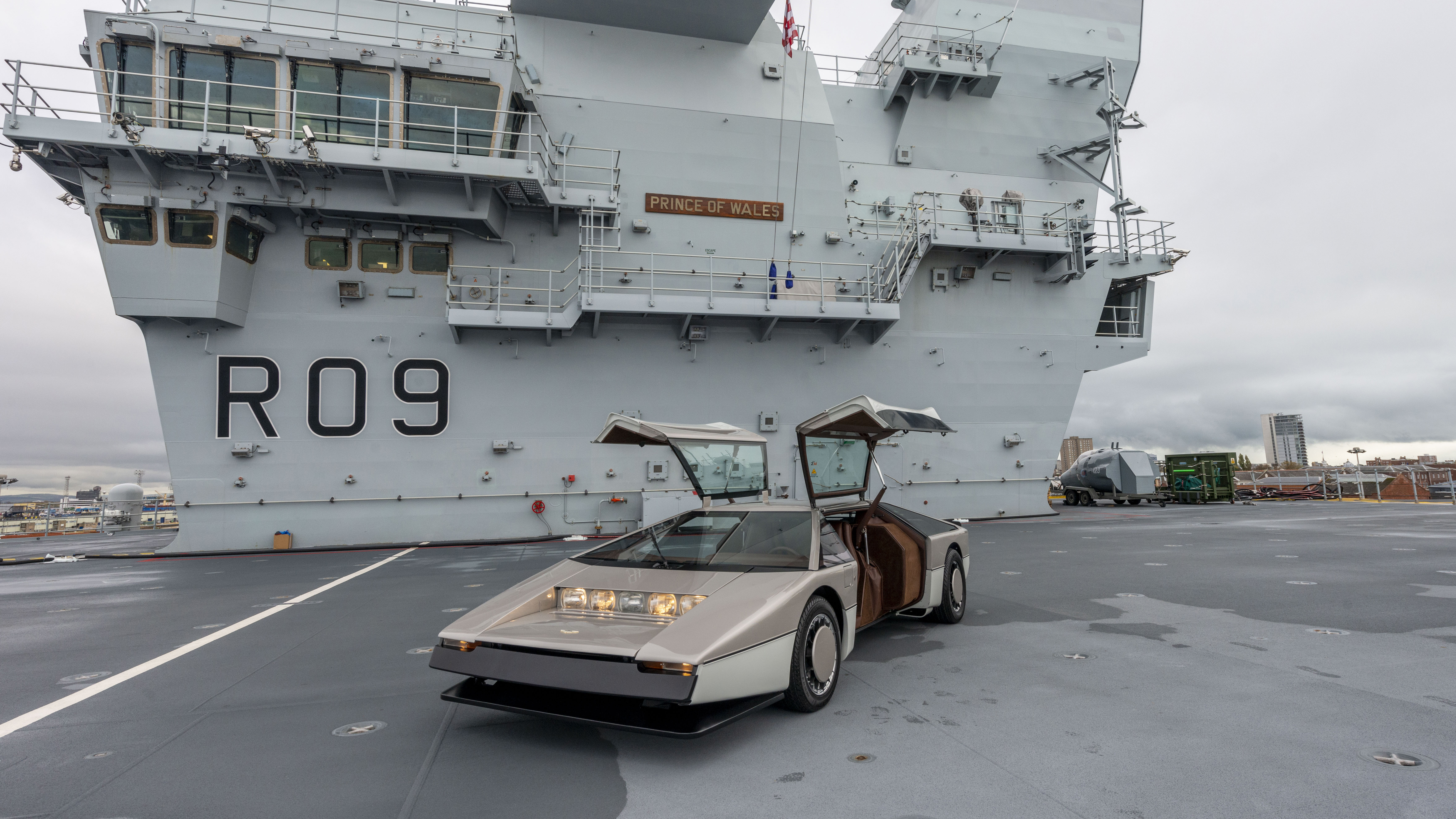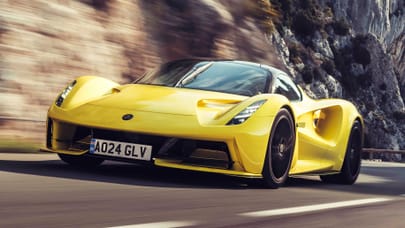
The 200mph, one-off Aston Martin Bulldog has been fully restored
One of 2021's happier automotive stories is the return of this quasi-mystical British concept car
The Aston Martin Bulldog is not an easy car to upstage, but if anything in the world of high performance transport can do it, a 65,000 tonne, £3.2bn warship gives it a good go. The flight deck of the HMS Prince of Wales (R09) will soon be teeming with F-35B fighter jets, but right now it’s all about a quasi-mystical British concept car.
Do you remember the Bulldog? If you happen to be a child of the Seventies and a Top Trumps aficionado, it’ll have been seared into your memory along with the likes of the Panther Six, Monteverdi Hai, and some loony piece of unobtanium from Swiss maverick Franco Sbarro. Designed by the late Bill Towns, the Bulldog dates from the same era in Aston Martin’s topsy turvy history as the utterly magnificent Lagonda saloon; Towns, it seems, had a problem with curves.
He also set the co-ordinates for an automotive future that never quite materialised. Former Aston Martin chairman – and saviour – Victor Gauntlett decided the car would be too expensive to put into production, and reluctantly canned it back in 1981. Destined to be a one-off, the Bulldog was subsequently sold to a collector in Saudi Arabia, before making its way to the US, and eventually being mothballed somewhere in the Far East. But it’s no mere footnote. Committed collector Philip Sarofim, who also owns the wondrous Bertone Stratos Zero, rescued it and has recommissoned it. Clearly another man who disavows curvy cars.
Guided by Victor Gauntlett’s gregarious and highly entertaining son Richard, a major restoration began several years ago, at Shropshire-based classic car experts CMC. And the team have done an astounding job, not just returning the Bulldog to its former glory but elevating it some way beyond.
According to CMC’s MD Nigel Woodward, the car was largely intact when it arrived at their facilities, if somewhat careworn after its most recent sojourn. A two-year restoration saw the Bulldog painstakingly stripped then reassembled. The tubular steel spaceframe was reinforced, substantially improving the car’s torsional rigidity. The original’s 5.3-litre V8 has been completely rebuilt, bored and stroked to 5.7 litres, and now has a pair of Garrett turbochargers running 0.9 bar of boost (the original’s fuel injection had been switched out in favour of some recalcitrant Weber carbs). TG understands that the engine is currently good for 650bhp with another 200 not out of the question. That said, it frazzled CMC’s dyno before it was getting fully into its stride.
It frazzled CMC’s dyno before it was getting fully into its stride
Aston Martin endurance racing legend Darren Turner has agreed to pilot the Bulldog on a high speed run to the 200mph top speed that so captured the imagination – of former Top Gear TV presenter Noel Edmonds amongst others – back in the day. That’s a punchy ambition for a 40-year old one-off with, shall we say, period-appropriate levels of downforce. At least he’ll be sitting in super comfortable seats, fabulously well-upholstered in the original Connolly leather. (Darren, that is, not Noel.)
The Bulldog’s return is one of 2021’s happier automotive stories, and its presence on the HMS Prince of Wales’ 920ft-long flight deck makes for a brilliantly incongruous sight. This is the Royal Navy’s first fifth-generation aircraft carrier, a nine deck ocean-going behemoth powered by two Rolls-Royce Olympus jet engines and six humungous diesels. She’ll carry up to 36 F-35B Lightning IIs in her hangar and four Merlin helicopters, with 1,600 crew aboard when she’s deployed under commanding officer Captain Steve Higham.
She’ll do 25 knots and has a range of 10,000 nautical miles. TG’s favourite fact: designated sections of her flight deck receive a thermal spray coating that fires powdered aluminium and titanium through a jet of plasma at temperatures up to 18,000°C. The molten droplets quickly solidify to create a 2-2.5mm-thick surface that bonds to the steel beneath, enough to cope with the massive heat created by thrust of the F-35Bs. Cost? A mere £15m per section. Here’s another one: the glass in the Flight Command ‘island’ costs £1m per pane.
Oh, here’s one final fun fact for anyone reading who’s planning an assault on the HMS Prince Wales: the ship’s bridge is housed in the other island, and if one of the two islands were to get taken out, each is designed to assume the other’s full functionality. (TG can also report that the food in the canteen is delicious.)
Top Gear
Newsletter
Thank you for subscribing to our newsletter. Look out for your regular round-up of news, reviews and offers in your inbox.
Get all the latest news, reviews and exclusives, direct to your inbox.
Bulldog spirit? Something like that...
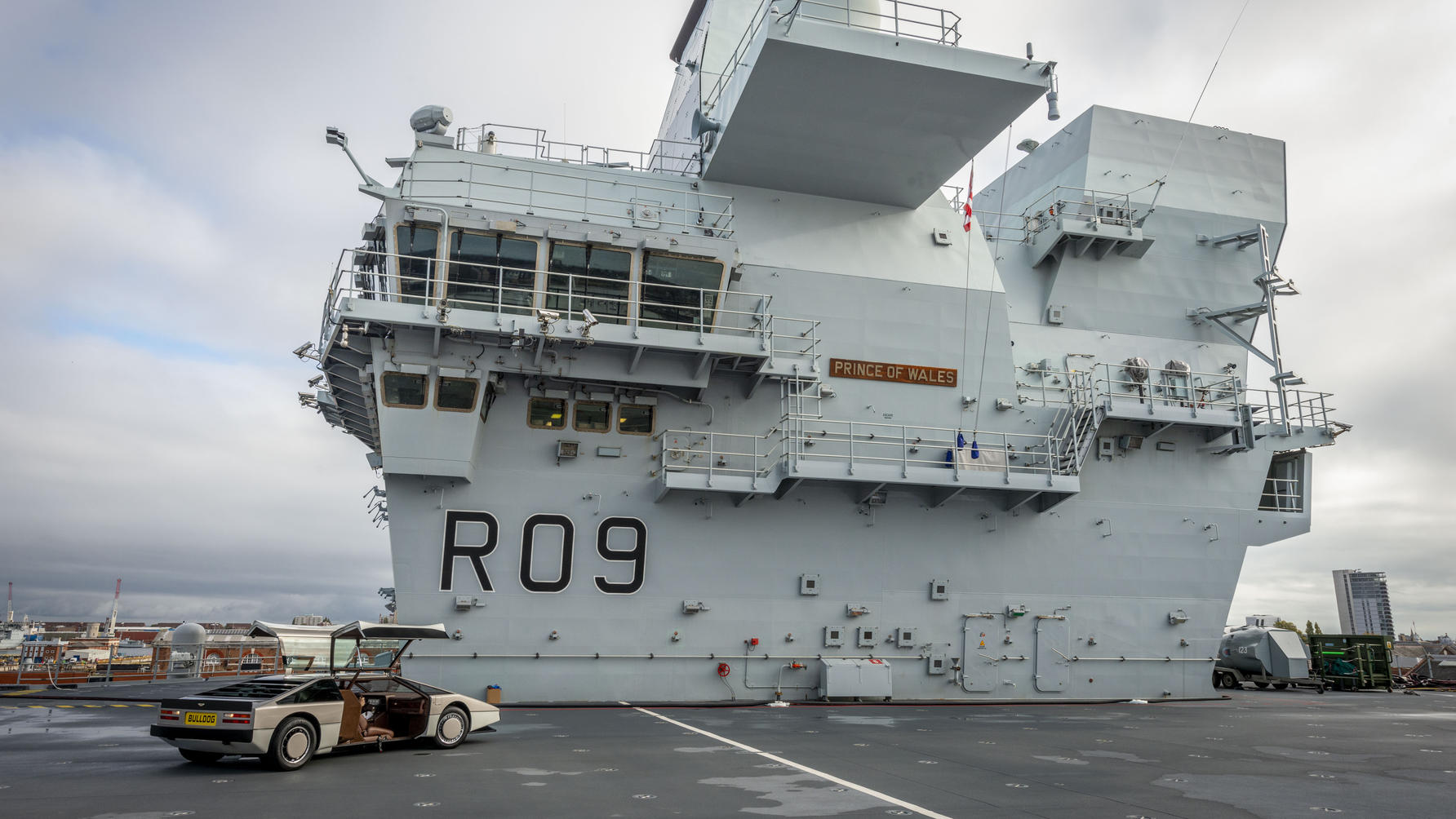
Photography: Dick Barnatt
Trending this week
- Car Review
BMW iX3




